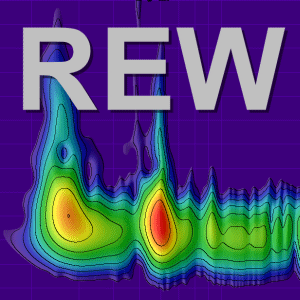TL;DR: When EQ'ing/leveling a stereo setup (L&R mains, 2 subs) to a particular target (e.g., 75db flat, Harman curve, etc.), do you match each speaker and each sub separately to the target level, match the combined subs to the target level, match the mains combined to the target level, or . . . ?
For a stereo setup (music), I have L & R mains and two subs (Lsub, Rsub). Everything goes through a miniDSP 2x4HD, the subs each get the combined L+R signal. My question is specifically which combination(s) of these should be used to EQ to a target house curve? I've searched for a few days, looked through the guides, and haven't been able to find a specific answer.
I'm specifically concerned about making sure the levels are correct across the range once I'm using all speakers together (listening to music). I've seen some guides say to measure all mains and subs separately, some guides say to measure all subs together. Most guides seem to suggest EQ'ing the subs together. However, measuring subs together leads to a higher SPL vs measuring them separately. Thus if I'm trying to match a Harman curve with a target of 75db (so ~81db at lowest frequencies), I'll set lower volumes for the subs (or apply a more aggressive EQ) in the miniDSP if I'm doing subs combined compared to subs separately, to reach that 75db target curve.
The same question applies to EQ'ing the mains to the house curve. I understand I should EQ the Lmain and Rmain separately, but should each be EQ'd to a target of 72db (so they combine to ~75db when both are played) or each to 75db? Is Trace Arithmetic A+B useful here?
What got me thinking is the guides that instruct to measure L+all subs and R+all subs, such as the AustinJerry guide. Wouldn't that lead to an SPL mismatch between the mains and subs, since the subs will have summed output compared to the single main speaker?
For a stereo setup (music), I have L & R mains and two subs (Lsub, Rsub). Everything goes through a miniDSP 2x4HD, the subs each get the combined L+R signal. My question is specifically which combination(s) of these should be used to EQ to a target house curve? I've searched for a few days, looked through the guides, and haven't been able to find a specific answer.
I'm specifically concerned about making sure the levels are correct across the range once I'm using all speakers together (listening to music). I've seen some guides say to measure all mains and subs separately, some guides say to measure all subs together. Most guides seem to suggest EQ'ing the subs together. However, measuring subs together leads to a higher SPL vs measuring them separately. Thus if I'm trying to match a Harman curve with a target of 75db (so ~81db at lowest frequencies), I'll set lower volumes for the subs (or apply a more aggressive EQ) in the miniDSP if I'm doing subs combined compared to subs separately, to reach that 75db target curve.
The same question applies to EQ'ing the mains to the house curve. I understand I should EQ the Lmain and Rmain separately, but should each be EQ'd to a target of 72db (so they combine to ~75db when both are played) or each to 75db? Is Trace Arithmetic A+B useful here?
What got me thinking is the guides that instruct to measure L+all subs and R+all subs, such as the AustinJerry guide. Wouldn't that lead to an SPL mismatch between the mains and subs, since the subs will have summed output compared to the single main speaker?
Last edited:














